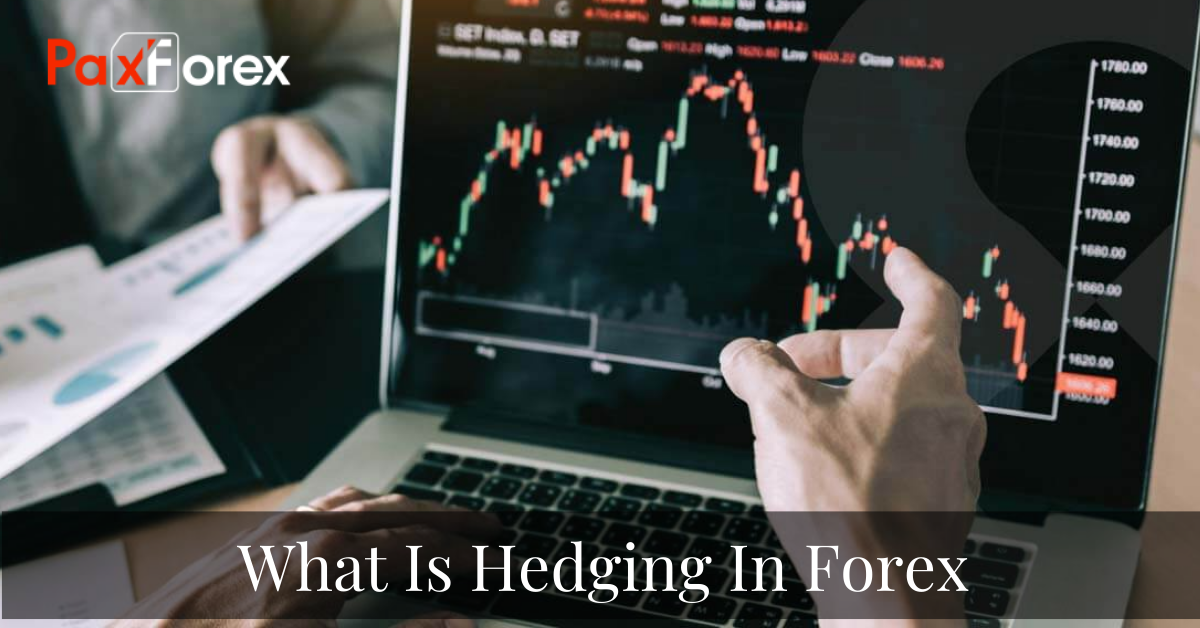
Today we are going to talk about what is Forex hedging, including brief overview of risk management techniques, alternative trading strategies and the steps a trader has to complete to turn from a novice into a pro.
How To Become A Professional Forex Trader
The longer you communicate with other members of the currency trading community, the better you understand one simple fact: each and every trader has their own approach to the Forex market. This does not mean that some are more right than the others. Forex is large and complex, meaning that it can be approached and benefited from on a variety of levels and angles.
When you see an experienced trader at work, it is a lot like a choreographed dance. Every move is practiced to perfection, all the necessary supporting tools are up and running, there is no doubt or hesitation in any of their actions. But getting to this stage is a long process. And a true challenge for the Forex beginners is to choose the right course of action to get to their desired outcome within a reasonable period of time.
There is no one-fits-all strategy that applies to all cases and the truth is you will probably try out several trading methods before you settle on the one that works just right. The good news, however, is that there is a really wide selection of options and as long as you are devoted to the idea of becoming a profitable currency trader, you will definitely find a way to get there.
In our opinion, the healthiest solution to figuring out what kind of trader you are is by considering all of the available options and trying them out to a reasonable extent. That is why we focus on giving detailed overviews of certain trading styles and the technicalities of various strategies and approaches. But just before we go into the puzzling matter of Forex hedging, let’s take a few moments to talk about the different strategies in general.
How to Choose a Forex Trading Strategy
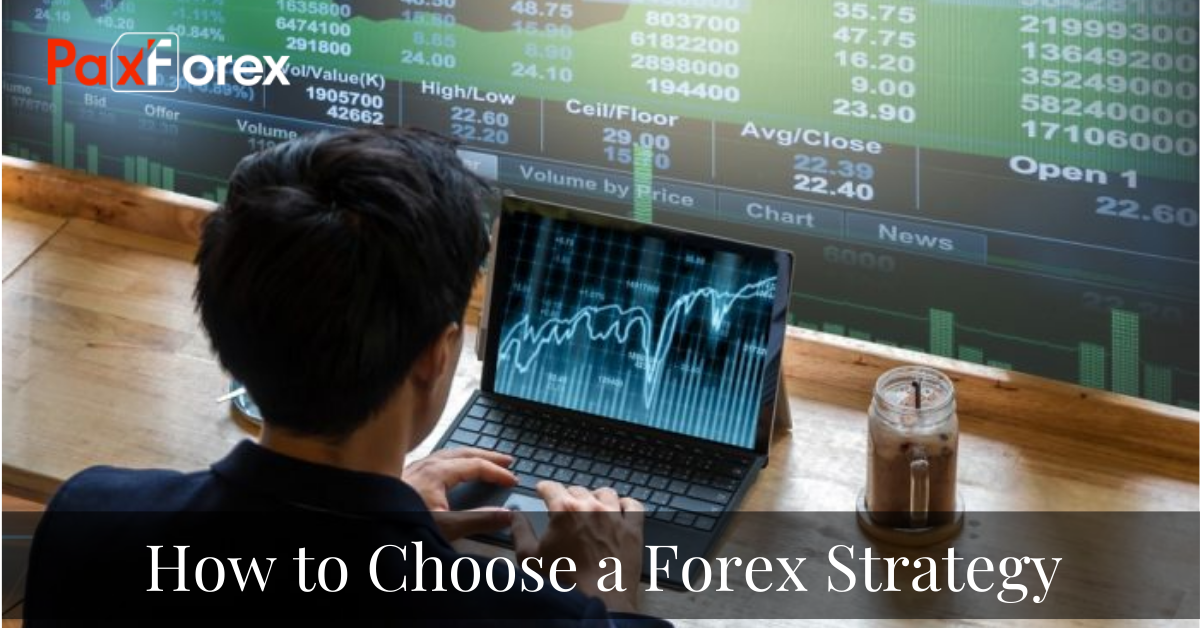
Having a strategic approach to pretty much anything is the wisest thing to do. If you are trying to get in shape, you commit to working out systematically. When you are studying a new language or a skill you set up a schedule of lessons and practice sessions. While cooking, more often than not - you follow a recipe.
Same goes for profitable Forex trading. As long as you are consistent, anything can be achieved. But the consistency itself won’t do much unless you have a specific goal in place. That is why before jumping into trying out various strategies, it is important to outline what are your ultimate expectations from the currency trading experience and how would you prefer to get there.
Having this understanding in mind will help you out on several levels: you will know what to look for, you will save a lot of time during studying and practice and you will eventually become a more educated and with it a more profitable trader. In order to picture what does your ideal trading journey look like, consider answering the following questions:
How much do I know about Forex? We have already mentioned that the foreign exchange market is a complex matter. Fully understanding the way it operates might take years. Of course, you are not supposed to know every little bit going in, but having some general understanding is certainly a plus. Take a couple of days learning about the different aspects of Forex, maybe even take a designated course. This will help you know for sure if currency trading is a good idea for you specifically.
What does your availability look like? While some are full time traders, others often have less than an hour a day to attend to the market. What is interesting, however, is that both types of trading enthusiasts have an equal chance of getting a steady income flow from Forex. But only if they have a thought-through strategy to follow. Some trading methods exist specifically for those who don’t have all day to trade. What you need to do is to realistically evaluate the amount of time you can invest into currency trading. And keep in mind that weekends do not count, since the market isn’t open on Saturday and Sunday.
How aggressive are you? Modern world is filled with sources of stress already. Hectic jobs, complicated relationships, exhausting traffic, health issues, bad weather - all of these contribute to the state of our overall mental well-being. But it is also true that some people are more resistant to stress than others. Whatever the reason is, the personal characteristics or the aspects of appraisal - we tend to react differently in the same situation. It can also be applied to trading: the pros are usually displaying thicker skin compared to beginners when the proverbial brown substance hits the fan at the market. And in terms of the implemented strategy this stress resistance will directly reflect on the amount of trades and the market conditions in which the trader is willing to participate. Good news here is that you can grow into a more aggressive trader over time, if you want to, it is just important to start from where you are comfortable enough to think clearly and act effectively.
How much do you want to be making? Any goal has to be SMART (Specific, Measurable, Achievable, Realistic and Timely). Following this logic you need to set up a series of targets you would like to be hitting over a certain period of time. As an example: setting a goal to turn $10 into $1,000,000 in one week is incredibly specific, but is it realistic? The Best way to complete this step is to picture a large number and then break it down into smaller, easily achievable segments. Then take those and stretch them over a reasonable period of time. That way go from $10 to $1,000, then from $1,000 to $10,000 and so on until you have reached your ultimate goal. Also keep in mind that the larger your ambitions are, the more effort is going to be required to fulfill them.
What will you need along the way? This one is a little general, but still important to consider. Various trading approaches ask for different tools, analysis techniques and actions. Evaluate what is available to you already and what you can easily get to support your trading endeavors. For instance, if you are a beginner trader, who is considering trading on news, grade your political and economical knowledge to see if it’s sufficient enough to support your trading career. You can, of course, always rely on ready to use sources of market analysis, but understanding them fully is still a key to the successful experience. Once again, the further you proceed and the more experience you gain you will always get new opportunities to gather the appropriate tools. But at the very beginning try to be as realistic as possible in terms of the available resources.
Based on your answers to these five questions you can somewhat narrow down the selection and speed up the search process. Simply focus on your goals and stay as resourceful as possible at every step of the way.
Since we have mentioned the Forex market analysis a couple of times already, it is only logical to briefly go over some of the basics of analyzing the market. In the next short segment we will discuss the analysis types and some of the analytical aspects that result in what is considered hedging in Forex.
Forex Analysis Types
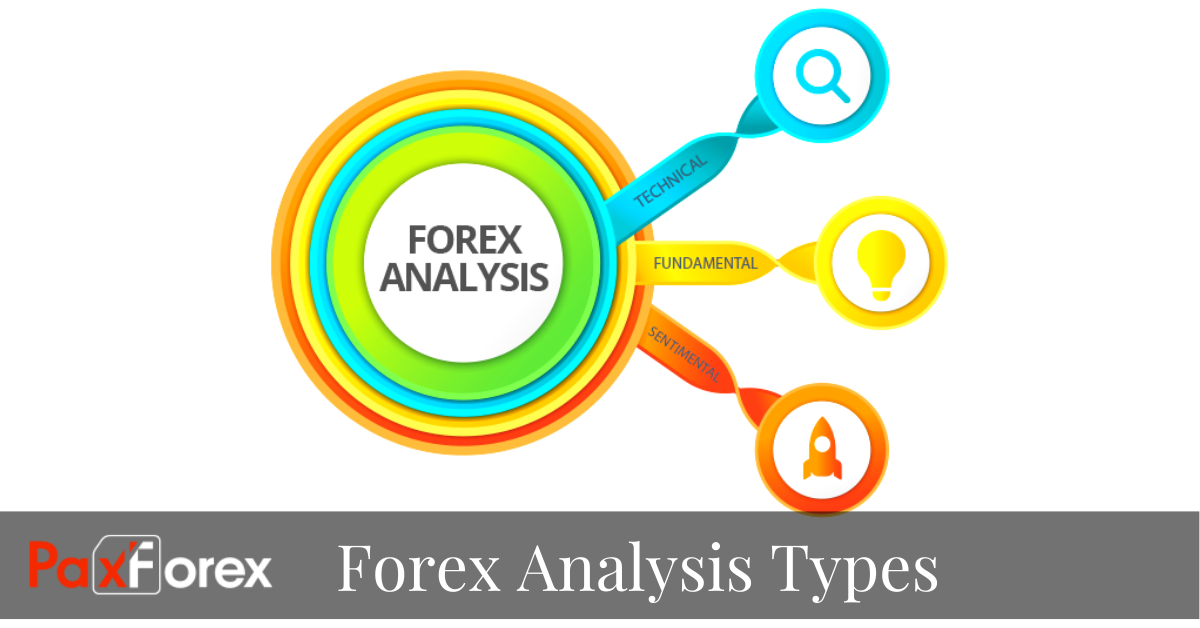
Thorough analysis is an inevitable part of any strategy. If simply put strategy is what we do, then analysis is why we do it. Random approach does not work on Forex, if a famous trading blogger claims that they were able to achieve significant heights by testing their luck, it is most certainly not true.
The main reason why Forex can be a stable source of income is that it can be analysed, systemized and forecasted. Most of what happens at the market happens for a reason and the task of any analyst on the foreign exchange market is to identify that reason.
There are two major approaches to categorizing the market data: fundamental and technical. Then there is also a subcategory that focuses not on the origin of a certain price move, but rather on the impact that move brought into the market, referred to as sentiment analysis.
Technical analysis is perhaps the most straightforward of all. It is based on the theory that price can be characterized as the ultimate representation of a certain asset. Simply said: technical analysts believe that the price itself is all we need to know about the currency in question. That is why in technical analysis we mostly focus on the numerical data of the past and the present to attempt predicting the upcoming numbers. There is a wide variety of tools used in this type of analysis, including automated algorithms, various indicators, specifically designed calculators and chart add-ons. You can also take a different approach based on your strategy, for example, only look at the asset’s value within one limited time frame, disregarding the previous data. Or on the contrary - you can go way back into the past to see how the currency in question acted under different circumstances. Bottom line - technical analysis is very practical and has a lot of ground to stand on in terms of implementation.
Fundamental analysis is slightly more abstract for one simple reason - it can be very subjective. Fundamentalists look at the price movement as the result of political, social and economical events in the country that affects the said price. This can include, but not limited to: elections, marches, export and import of goods, international relations and so on. There are two factors that make fundamental analysis a bit harder to quickly grasp. First, the same event can be interpreted differently depending on who is assessing it. Second, even if the specific event is expected to cause a lot of reaction at the market, it doesn’t always go that way. Since there are many traders who base their decision-making process of fundamental analysis, their opinion tends to result in a certain volume of trades going in the same direction. And that direction won’t always be rational. Which brings us to sentiment analysis.
Sentiment analysis of the Forex market focuses on the overall reactions of the active traders to different events and market conditions. The sentiment combines the aspects of both technical and fundamental analysis. During this approach, the volume and volatility are measured in terms of evaluating the significance of the current mood of the majority. And then those are compared to so-called outside aspects, such as the one described above (elections, riots, economical reports). Sentiment is the most unexpected and difficult to measure contributing element, but in most cases it is also the biggest driver of the market.
Ideally, a trader who is taking Forex seriously, needs to if not master then fully comprehend each of the analysis types. In one way or another they are very connected and play a great role in the turnout of every situation at the market. This, of course, is a long process and in many cases it comes in naturally as a result of years of experience.
However, since today we are talking about Forex hedging, it is important to understand where it comes from. While the hedging process itself is very technical, it usually appears as a preventive measure based on the results of fundamental analysis and the currency pair related sentiment. Without any further ado, let’s figure out what is Forex hedging and how it works.
What is Hedging in Forex
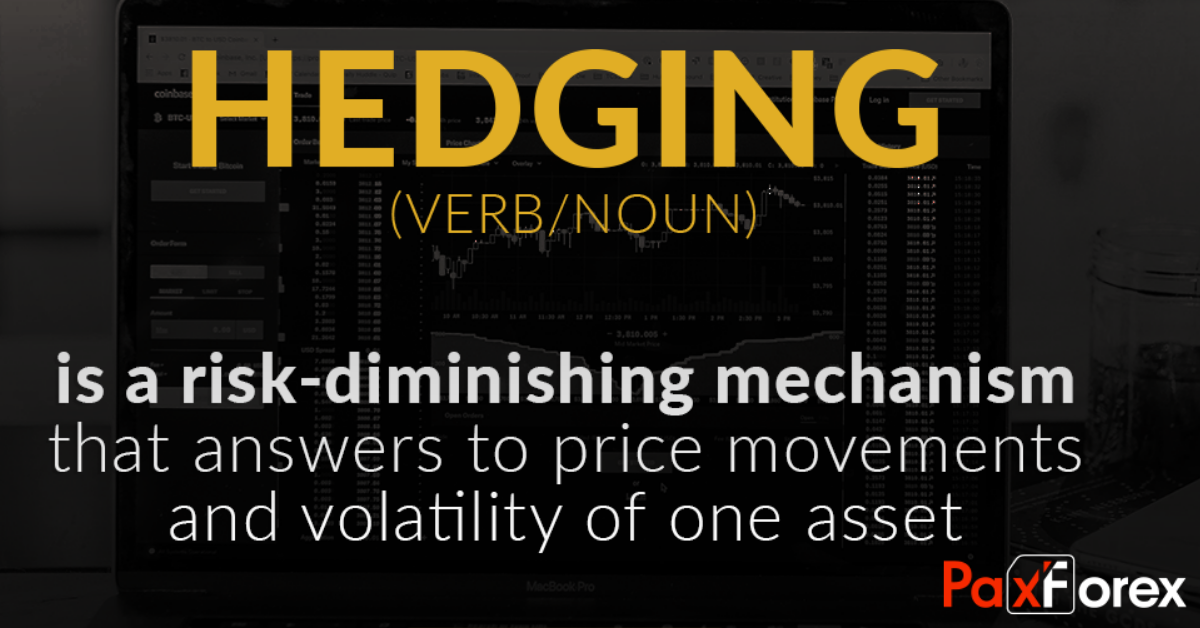
Forex hedging has nothing to do with the way of shaping greenery, if that was the first thing on your mind. But not unlike the garden hedges, traders usually tend to use this method as a way of shielding from an undesirable situation and covering all fronts. From this we can easily conclude that Forex hedging is a type of risk minimizing technique.
The hedging definition may sound peculiar at first: while hedging a trader simultaneously opens two contradicting positions that ultimately cancel one another. See, it doesn't make too much sense. But, it will if we consider the reason behind such action.
Hedging often occurs when a certain position needs to be protected from an upcoming event or a series of events. In most cases it looks like a short-term position (either long or short) that arises during the long term one (which also can be both long and short). This happens when the trader expects high volatility to follow a scheduled or a random event and wants to protect the existing position from the wave. Such technique does not result in any additional profit but it also cancels out the chance of losses, thus serving its purpose. This is what is considered a perfect hedge and it is only possible with the assistance from global brokers, as the United States government regulates against hedging.
The other type of hedging is called an imperfect hedge and builds around using Forex options. Through this approach only a portion of the risk is cancelled out and this makes it slightly less common than the first one. To get a better understanding of the imperfect hedge, we will take a quick detour and talk about Forex options.
Options Trading in Forex
Options trading is a kind of advanced concept and not all brokers support option trading because of a number of technicalities. Option is a derivative that is based on the underlying currency pair. There are many shapes and forms for options to exist in, but the main takeaway is that they do not represent the purchase or sale of an asset, but rather the right to buy or sell the said asset at a certain time at the agreed upon price. Trading options does not obligate traders to exchange physical assets, but gives them a chance to do it if they needed to.
Buying option still costs money, even if you don’t use them. However, this cost is a one time charge as options expire on the specific date, whether they have been used or not. Options can be used in anticipation of both the upward and downward movements. They are used as preventive measures, but they can only shield traders from a certain part of the risk associated with the trade. Overall, options trading is a whole other topic, which we will discuss some other time. Now, let’s get back to the more popular way of hedging - the perfect hedge.
How to Hedge in Forex
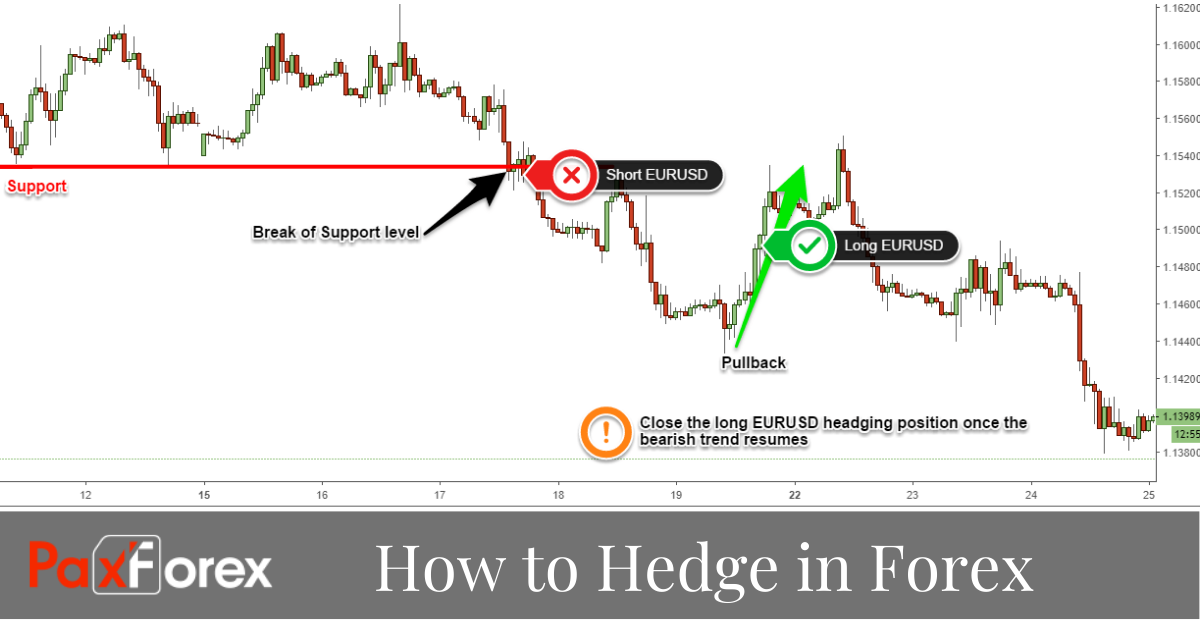
There are various ways to hedge on Forex. For the purposes of keeping this informative but still as beginner friendly as possible, we will focus on the most basic hedging approaches.
Since essentially hedging is a technique to minimize exposure to the risk in a certain currency pair, the most common way to implement it is by opening a position that contradicts an already open one. For instance, if you are currently holding a long position and have doubts about its absolute success you can open another that correlates with the currency you have second thoughts about.
Another way is to spread out a number of hedging strategies by opening multiple positions with connecting currencies, such as GBP/USD, CHF/GBP and JPY/CHF. This way when one currency weakens you automatically benefit from the strengthening of the currency it is paired up with in one of your additional positions. This is commonly referred to as a part of portfolio diversification, a practice where traders invest in a variety of assets to always remain profitable.
To technically achieve hedging, consult with your broker on the solutions they offer. In some cases the direct hedging will be limited, but substituted with equally effective tools and in some cases there is going to be a choice of supporting software and suggestions. One thing to remember, is that hedging will not guarantee additional profit or entirely cover you from any risks and losses, but it will allow for some flexibility in terms of minimizing risk and optimizing the trading process.
Forex Hedging Strategies
As for the Forex hedging strategies, we have already mentioned that there are two general approaches: perfect and imperfect. Now, the particular instructions to hedging methods will largely depend on the overall style and strategy. It is also important to note that hedging is mostly applicable to long term trading styles, meaning that day traders and scalpers rarely even consider using this technique.
To understand if you should make hedging a part of your strategy, you need to first know what factors affect the price for your preferred currencies and how much they impact your own analysis process. Chances are, if you are trading on the economic calendar, you will have a certain layout of risk managing techniques and preventive measures. But if you are a swing trader, who barely pays attention to fundamental aspects, hedging in particular might not be the best solution.
And it is also good to remember that when you have a doubt about the price of a certain asset or you have predicted a specific undesirable move, the best way to act is to close the position at the current price and come back when the storm passes. It won’t mean that you will stay profitless - simply focus on trading other currency pairs.
Forex Hedging Tools and Tips
Apart from the theoretical part, perfect hedging on Forex is simple to implement. All you are doing is opening additional trades. Remember that it will only work with a broker that allows traders to simultaneously buy and sell the same asset, which are usually the brokers outside of the US.
The crucial tools for planning and executing a hedge are technical indicators. Indicators exist to find, confirm, predict and measure market trends and many of them can be very helpful in seeing one step ahead. If you are trading manually and decide to hedge, the indicators will allow you to outline the moment when you will want to implement hedging as well as the period during which the hedge will exist.
Also do not disregard the usefulness of pending order, no matter what kind of position you are holding. Buy limits, sell limits, buy stops and sell stops allow traders to automatically have their trades executed when the price either reached the desired level or went in the opposite direction. As a general rule, try to set up pending order with every trade you open, even if it is very small and seemingly insignificant. In currency trading, more than anywhere else - better safe than sorry.
There is another hedging related concept that deserves our attention today and that is Forex hedging EA. Let’s take a moment discussing the possibility to automate hedging and whether to consider implementing this approach.
Forex Hedging EA

While EAs (Expert Advisors) on their own are very useful in a lot of tasks, some of the actions they try to tackle are slightly out of their reach. Automated trading exists for longer than you might think, as it came into the Forex game back in the middle of 20th century. At the beginning trading robots were mostly performing basic tasks without affecting the way the market operated as much. However, in the last couple of years EAs have displayed very strong presence at the market, replacing more than a half of active traders at the market either partially or entirely.
Forex trading robots work by connecting to the account of their user and then proceed by analyzing the market, developing and testing strategies and then trading on behalf of the user. The reason why they are so popular is due to a lack of availability of many traders, who believe in Forex market as a reliable source of income but do not have an appropriate amount of time or skill to trade on their own.
The majority of robots operate by observing the market and copying the trades that they predict to be successful or that played out successfully within a matter of several seconds. Copy trading is generally a common approach, often treated to expert advisors due to its extreme technicality.
Now a lot of developers claim that they have perfected automated hedging to the point that the trader won’t even need to be present in the complex decision-making process. And while the execution part of the hedging process is, as we know, pretty much just an easy set of steps, the real challenge comes in the process of choosing between hedging and walking away altogether.
A rational human trader can use their judgement to evaluate whether the position is worth fighting for or if it is a lost cause. The hedging robot is designed to, well, hedge, meaning that it will submit to use this approach in most types of situations. Of course, the technology is constantly evolving, and we already have artificially intelligent EAs, who are capable of performing a nearly human-like decision-making. But for now, the best way to go about implementing a Forex hedging EA is either not at all or with close surveillance and ability to regulate the process to a certain extent.
Just before we wrap up our discussion about hedging in Forex as one of the risk management techniques, it is only fair to consider some alternative approaches to minimizing your risks during currency trading.
Forex Risk Management Techniques
As per the world-famous creator of a global social network, Mark Zuckerberg - the biggest risk is not to take any risks. And this is probably the best way to put it in terms of risk of forex trading. Foreign exchange can be profitable just as it can be unpredictable and irrational. Every single trader, participating in the exchange process is exposed to risks. Without risk there is no profit.
The wisest approach to risk is to acknowledge it, measure it and minimize it to the least painful amount. In order to calculate the risk to reward ratio you will be using when setting up a new position, start by evaluating the size of the risk you are willing to take. If you are using a ready to go strategy, the risk to reward will be most likely outlined in the conditions. If not - go with your own gut and preference. As we said earlier, some traders are perfectly comfortable with the aggressive markets and have no problem going all in, in terms of risk.
Once you know how much you can afford to risk, just divide the potential reward (net profit) by the cost of your maximum acceptable risk. Adjust this ratio when needed, if you are trading with another currency pair or if the situation at the market has changed. As a bonus, here are a few simple suggestions on minimizing your risk while trading on Forex:
Diversify your portfolio by operation with a selection of currency pairs. In the very beginning of your journey, focus on one or two pairs that you will be comfortable trading with. And as you progress, add other instruments into your arsenal to gain larger profit and benefit from every possible situation.
Trade with just a portion of your account balance, while preserving the rest. Deciding on how much you want to trade with is entirely up to you, but it is always a good idea to focus on preserving what you have already gained and staying cautious in terms of potential risks. A rule of thumb is to keep at least a quarter of your account balance intact at all times.
Learn when to stop. This one includes a variety of factors, such as: your current emotional state, the market condition, the unexpected news releases and more. A professional trader will always see the opportunity to benefit from the market, but they will also know when it is best to pause and wait for a certain situation to unravel. Fighting your very human instincts such as greed and ambition can be tough, but it is key to successful and enjoyable Forex experience.
What is Hedging in Forex: Summary
The main takeaway from today’s post is that hedging is a complex approach to minimizing risk, that requires a good amount of analytical skills to be executed properly. Studying the market and learning to see the way it forms various patterns is very important in every trading experience. It is also always a wise idea to try out a certain method or technique in the simulation mode using a free demo account for Forex trading. Demo accounts allow you to see every move in action without causing any effect on the actual market or your account balance. Using demo to try find out what kind of tartar you are and what strategies work and do not work for you is very convenient and absolutely free - definitely worth giving a try. Other than that, make sure to keep learning and finding out more and more about currency trading to become a true professional one day.







